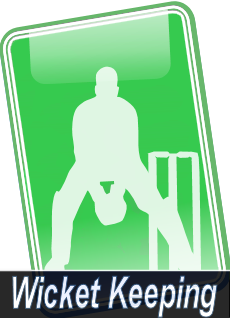Wicket-keeping tips: The basics of catching
 This guest article by first-class and international 'keeper Nic Northcote is an extract from his new book "Wicket-Keeping: The Ultimate Guide to Mastering the Art": Available now on PitchVision Academy.
This guest article by first-class and international 'keeper Nic Northcote is an extract from his new book "Wicket-Keeping: The Ultimate Guide to Mastering the Art": Available now on PitchVision Academy.
A wicket-keeper is required to catch hundreds of balls in a match. These catches can take the form of balls passing the batsman’s bat, edges, high catches or throws from the fielders. The wicket-keeper needs to be able to safely catch with both of his hands - individually and simultaneously -when standing still, running and diving. It is therefore absolutely essential that a wicket-keeper has an excellent basic catching technique. Furthermore, a good catching technique will help reduce the frequency of hand or finger injuries.
Some key points relating to the general catching technique of a wicket-keeper:
As the old cliché goes, two is always better than one, and the wicket-keeper should at all times attempt to catch the ball with two hands and preferably without diving. Swift footwork alone will often enable the wicket-keeper to get his body into a position to catch the ball with two hands and without having to dive.
The most important rule when catching is that the wicket-keeper must keep his eye on the ball from its point of departure until it has safely come to rest in his gloves. If possible, the keeper’s head and eyes must be directly above the line of the ball when catching.
Another absolutely essential consideration when catching is that the keeper must keep his head as still as possible. If his head is moving, so are his eyes, and the relative position of the ball to his eyes is therefore constantly changing. This is similar to catching a ball that is constantly changing direction, and makes pulling off a successful catch so much more difficult.
When catching the ball, the wicket-keeper must have what is commonly referred to as “soft-hands. The keeper must try to extend the time of contact between the ball and his hands for as long as possible. By catching with relaxed elbows and moving the gloves in the same direction as the path of the ball (riding the ball), the keeper can soften the impact of the ball on the gloves, thereby preventing the ball from popping out of the gloves.
The opposite of catching with soft hands is referred to as “snatching” at the ball. Snatching at the ball occurs when the keeper goes at the ball rather than letting the ball come to him. Attempting to catch the ball with rigid (or “hard”) elbows and hands often results in dropped catches and bruised or injured hands.
Catching tennis balls is an excellent way to practice catching with soft hands. Due to the elasticity of the tennis balls, they tend to bounce out of rigid or hard hands far easier than a hard leather cricket ball, and they therefore provide a clear indication of whether or not a wicket-keeper is snatching at the ball. A coach can use a tennis racket to hit tennis balls at the wicket-keeper, who can practice catching them with and without gloves.
Want to know the secrets of how to change a game with a moment of wicket-keeping brilliance? Pick up a copy of "Wicket-Keeping: The Ultimate Guide to Mastering the Art" and become a better keeper today.
- Login to post comments



Comments
i want batting drills